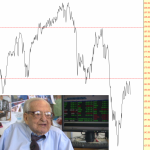On May 1, 2003 on the flight deck of the USS Abraham Lincoln then President George W. Bush, after becoming the first U.S. president to land on an aircraft carrier in a fixed wing aircraft (in a dashing olive drab flight suit), declared underneath an enormous “Mission Accomplished” banner that “major combat operations” in Iraq had been concluded, that regime change had been effected, and that America had prevailed in its mission to transform the Middle East. 13 years later, after years of additional combat operations in Iraq, and a Middle East that is spiraling out of control and increasingly disdainful of America’s influence, we look back at the “Mission Accomplished” event as the epitome of false confidence and premature celebration.
The image of W on the flight deck comes to mind in much of the reaction to this week’s decision by the Federal Reserve to raise interest rates for the first time in nearly a decade. While many in the media and on Wall Street talked of a “concluded experiment” and the “dawning of a new era,” few realize that we are just as firmly caught in the thickets of failed policy as were Bush, Cheney, and Rumsfeld in the misunderstood quagmire of 2003 Iraq.
In its initial story of the day’s events, The Washington Post (12/16/15) declared that by raising the Fed Funds rate to one quarter of a percent The Fed is “ending an era of easy money that helped save the nation from another Great Depression.” Putting aside the fact that 25 basis points is still 175 points below the near 2.0% rate of core inflation that the government has reported over the past 12 months (and should therefore be considered undeniably easy), the more important question to ask is into what environment the Fed is apparently turning this page.
Historically, the Fed has begun its tightening cycles during the early stages of expansions, when the economy had enough forward momentum to absorb the headwinds of rate increases. But that is not at all the case this time around.














Leave A Comment